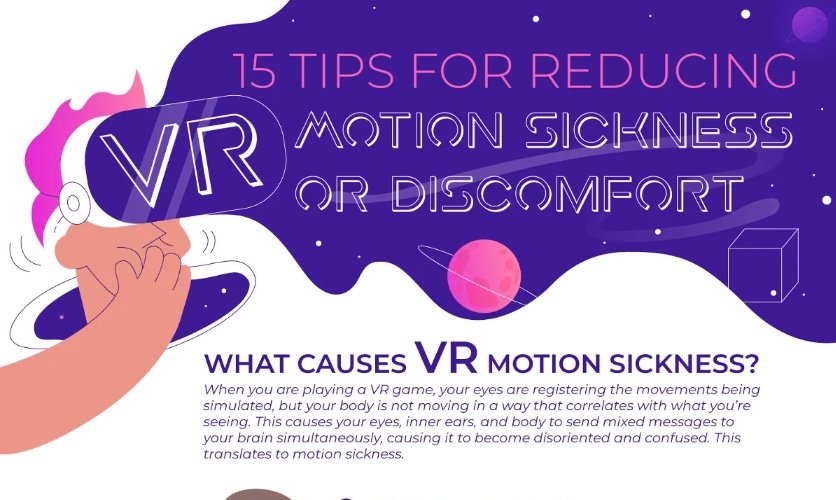Have you tried VR? Around 15% of the American population enjoys virtual reality games, or 50.2 million people! Virtual reality is rapidly emerging as a means to connect, play, explore, entertain, and advertise, especially since the pandemic has transformed the way we live.
With more and more VR headsets hitting the market, virtual reality is becoming more accessible to the public. While some can jump right in with no problems, others experience unpleasant side effects from virtual reality headsets such as motion sickness.
Why do we experience motion sickness from virtual reality?
As our eyes register the movements being simulated to us through VR, our bodies are not moving in a way that corresponds with what we are seeing. This overloads the brain with mixed messages simultaneously, causing it to become confused. This translates to symptoms such as motion sickness, disorientation, or discomfort.
How do you fight motion sickness in VR?
How can we deal with VR motion sickness so that we can just enjoy the experience? Fortunately, there are many excellent methods for reducing negative VR symptoms so you can get your head in the game! This guide provides 15 tips to get started. One of the key tips to follow is to start slow and build tolerance.
Manufacturers recommend taking 10 to 15 minute breaks for every 30 minutes of virtual reality play. Also, avoid high-intensity games with racing, flying, or other fast movements until you really establish your “VR legs”.
Medications such as Benadryl and Dramamine can help especially if you experience nausea or vomiting from VR. You could also try venturing outside; while the science is unclear, many people report feeling relief from fresh air while playing. If you would rather avoid medication, try ginger to relieve nausea and promote a sense of calm.
By implementing these tips, you can enjoy all that virtual reality has to offer more comfortably.





